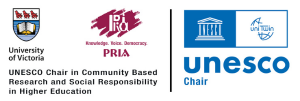 During the past decade, the most fascinating phenomenon of human demography has been massive migration of populations from rural to urban areas. This migration has been most prominent in the Asia-Pacific region where more than half a billion people have entered cities. More than half of the world population now lives in cities.
During the past decade, the most fascinating phenomenon of human demography has been massive migration of populations from rural to urban areas. This migration has been most prominent in the Asia-Pacific region where more than half a billion people have entered cities. More than half of the world population now lives in cities.
In this great rush for urbanization, cities have become far more stratified and exclusionary than before. Not only regions of a city have gated communities, access to high quality services of water, sanitation, transportation etc; many of these ‘elite’ parts of big cities also have high quality educational and cultural facilities and institutions for their citizens.
Yet, an increasingly larger proportion of city-dwellers are living in poor conditions, earn low incomes and wages, engage in informal occupations (like vending, hawking, rag-picking, construction, etc), live in informal settlements which are not recognised by municipal authorities. However, their economic contribution to the life of the city is enormous.
A brief look at the great cities of human civilization would suggest that the social and human scaffolding was essential for economic activity to thrive. Great cities have many educational institutions at post-secondary levels; welcoming cities have cultural institutions that promote learning (like museums, libraries and music/theatre/art centres). In a way, cities promote learning, life-long learning, of their citizens.
It is in recognition of this reality that two interesting recent developments are worth mentioning. First, at the initiative of UNESCO/UIL, an International Platform of Learning Cities is being promoted, and a major conference is being planned in Beijing in October. PASCAL International Observatory is convening its Asia-Pacific conference on Learning cities in Hong Kong in mid November.
Two sets of issues are important for these initiatives to keep in focus. First, cities have elites and the poor (homeless, jobless); learning institutions, efforts and policies must not exclude these informal inhabitants of cities. They are poor, hence learning opportunities for them must be even more actively designed. If urban poor do not get access to learning resources and opportunities, they will remain ghettoized.
Second, in most cities, local governments are active; sometimes democratically elected, sometimes not, municipalities have councilors and mayors. It is important that mayors and other leaders of municipal governance own and drive these efforts of making their cities learning-oriented. Local political and institutional leadership must be engaged right from the beginning. Otherwise, experts will create plans that no one wants to own.
By virtue of their homes in cities, post-secondary educational institutions have potential for an enormous contribution in learning cities. However, such educational institutions must keep in focus the twin requirements of inclusive cities (cities for all citizens) and the central responsibility of local governments, municipalities, councilors and mayors in its realization.
Rajesh Tandon




